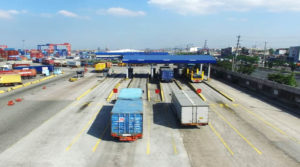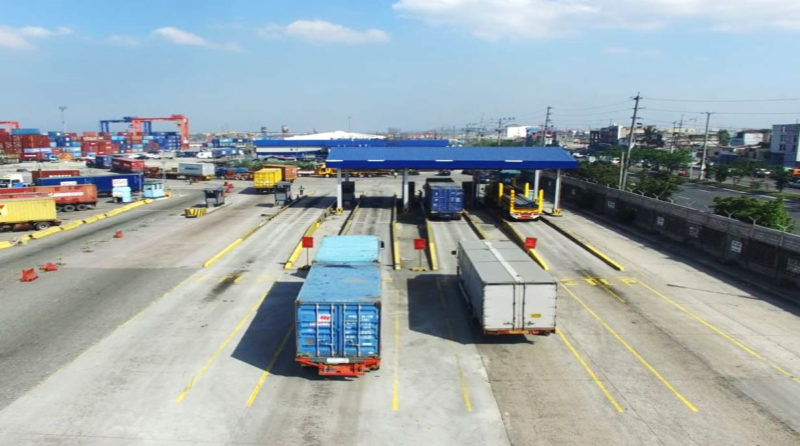
Shipping lines and truckers using Manila North Harbor have listed action plans and measures for this year and the next few years to ensure containers flow smoothly around the terminal without the need for a Terminal Appointment Booking System (TABS).
The Philippine Liner Shipping Association (PLSA) has crafted an action plan following a meeting with the Philippine Ports Authority (PPA). The group in a letter to PPA on September 13 cited the ports authority’s agreement to temporarily shelve its Board’s plan to implement TABS in North Harbor pending submission of the PLSA plan.
The Integrated Haulers and Truckers Association (IHNTA) also agreed to submit a traffic management plan that aims to ensure the smooth flow of vehicles around the port area.
PLSA, INHTA, and other stakeholder groups transacting at North Harbor earlier expressed opposition to the PPA Board’s decision to impose TABS in the domestic terminal as well. They noted the operational glitches being experienced by current TABS users, the cost of booking, and the “very high and unreasonable penalty fees.”
They also pointed to the peculiarities in domestic shipping “such that the implementation of TABS would be impractical if not unnecessary.”
PLSA last August already submitted a position paper on why TABS would only add “additional complexity” to North Harbor’s transactions.
TABS is a web-based booking system for trucks going to and coming out of the port that has been in place for almost two years at Manila’s two international terminals—Manila South Harbor and Manila International Container Terminal (MICT).
PPA earlier said it wanted to extend coverage of the system to North Harbor and Harbour Centre because they share the same network of trucks as the two other Manila terminals already with TABS.
For 2017, part of PLSA’s proposals to enhance container flow in North Harbor and address the supposed “restrictive MNHPI (Manila North Harbour Port, Inc.) software for the release/receipt of cargoes” is to classify cargoes as regular containers and off-dock transfers.
PLSA is asking port operator MNHPI to define or develop a separate procedure applicable to shipping lines’ off-dock transfers that aims to achieve a “pass through mode” of transaction. The group is asking the port operator to have advance processing for off-dock transfer. Off-dock transfers are movements of laden and empty containers from shipping lines’ off-dock container yards (CYs) into North Harbor and vice versa, and they account for 40% of carriers’ container volume.
Domestic liners’ off-dock CYs are strategically located within the port area and are not subject to truck bans. PLSA earlier said TABs was not necessary because domestic shipping lines maintain off-dock CYs in the port zone of North Harbor, which allows them to flexibly manage container transfers/moves for both laden and empty containers.
Shipping lines, for their part, will be enhancing their information communication and technology resources to be able to interface online with the terminal operator. They will also be submitting advance information for inbound manifest for release, repositioning, or off-dock transfer to allow for the timely submission of shipping documents.
To improve and determine truck turnaround time relevant to the receipt/release of containers, PLSA is suggesting the use of truck visit slips to monitor trucks from pre-gate to in-gate, and from in-gate to out-gate.
To ensure that an ideal level of port utilization is maintained, PLSA recommends to MNHPI and shipping lines the use of quay cranes. For 2019, the group suggests reclaiming and expanding nearby land areas, as well as relocating informal settlers.
Part of PLSA’s proposed measures is to create a consultative committee that will discuss and resolve the issues and concerns of stakeholders with North Harbor operations. This has actually already been done through PPA Operations Memorandum Order No. 01-2017, which created the PPA Port Management Office-National Capital Region North Port Operations Consultative Committee, composed of PPA, MNHPI, and stakeholders.
INHTA, in its separate position paper dated September 14, said “MNHPI traffic management and its actual operations inside the port [are] well managed and systematized.”
The trucking group said it supports efforts by the government and port operators to improve the system within the port zone but “strongly opposes the implementation of TABS at North Harbour.”
“We believe that the systematic approach of MNHPI in handling its traffic flow is effective and efficient and having TABS in North Harbour will not relieve traffic congestion in the streets of Metro Manila,” INHTA added.
Despite noting that traffic flow in Manila North Harbor is efficient, INHTA, following the PPA meeting, still listed several traffic measures to further ease southbound queuing along Radial Road 10 (R-10) going to international ports.
INHTA suggests placing a 50-meter-long concrete barrier along R-10 from the sidewall fence of the flyover (southbound service road) to eliminate swerving of trucks.
It also recommends clearing the southbound service road leading to MICT of illegally parked vehicles and other obstructions. Another suggestion is to deploy traffic enforcers, in coordination with the Manila Traffic and Parking Bureau, to manage the traffic flow southbound, particularly trucks entering Manila South Harbor and MICT, whenever gate congestion builds up.
INHTA also proposes dedicating the three outermost lanes of R-10 southbound for trucks entering MICT, and the three innermost lanes for trucks and private cars passing through, southbound, whenever there is gate congestion buildup. – Roumina Pablo





